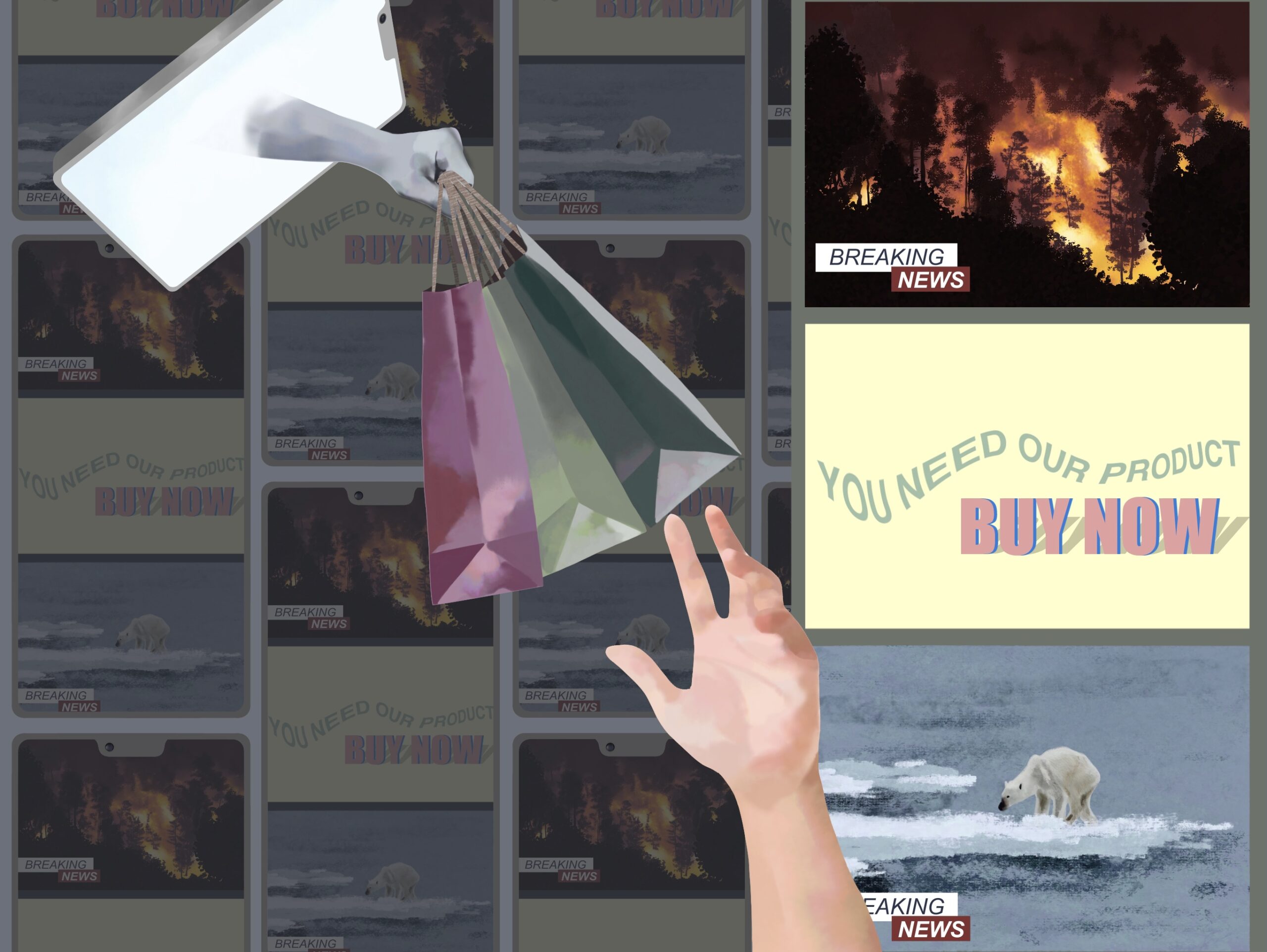Scroll, spend, repeat: Social media and overconsumption
Exploring social media’s involvement in overconsumption, microtrends and fast fashion.
We heavily rely on social media — whether it be food recipes, connecting with friends, or online shopping. With access to methods of buying directly within an app, it becomes much easier to fall into the rabbit hole of purchasing what we don’t need, resulting in both microtrends and overconsumption.
Microtrends and overconsumption are advertised on social media through companies that send packages to different influencers. Influencers then produce product reviews and promotional videos that showcase the products as “life-changing”. Once the trend dies out, the product typically goes to waste and is never used again. Further, social media embeds shopping into day-to-day scrolling. For example, on TikTok, influencers push their viewers to click on product links in their content, so the influencer can be paid. This makes the consumer more susceptible to unnecessary purchases.
Fast fashion is also connected to this endless cycle of overconsumption. With shopping hauls, outfit of the day (OOTD) videos, and new styles emerging, companies produce many clothes for low prices. Low prices, paired with social media and trending videos, result in an incentive for a consumer to purchase. Companies like SHEIN, Temu, and TikTok Shop offer various discounts and coupons on their products, making it easier for consumers to buy more for cheap.
We as humans care about what other people think and perceive us. To fit into this box, people partake in these trends to look cool. For example, younger kids are massively purchasing Drunk Elephant skincare products. The product’s packaging and advertising were initially geared toward millennials but appealed to younger children even though many of their products can damage their youthful skin. Older influencers reviewing these products result in younger generations’ obsession with these products and their excessive use as well. It forces those using social media to think that they have to fit into these trends to stay relevant.
Overconsumption, social media, and fast fashion are not only damaging mentally and financially but also environmentally — contributing to millions of overstocked products, pollution, the production of greenhouse gasses and, most notably, using the resources available to us faster than we can regrow them. This is also related to the price of the product. Since the clothes are made of cheaper material, we end up with more plastic materials in our oceans, water, and soil.
Today, a new community is emerging on social media, labeled the “de-influencer”. De-influencers encourage consumers to reduce their purchasing habits and overconsumption. Their viewers are influenced to reuse, reduce, and recycle. They are also spreading the message that you don’t need all of these products that are being advertised in order to fit in.
Instead of reducing, reusing, and recycling, we tend to scroll,spend, and repeat. As consumers, we have to learn how to manage our shopping habits. When looking at a product you are tempted to purchase, ask yourself if you really need it or if you can live without it, to protect both our planet and your wallet.

